
Vintage sewing machine manuals are invaluable resources for maintaining‚ restoring‚ and operating classic machines. They provide detailed guidance on functionality‚ troubleshooting‚ and care‚ ensuring optimal performance and longevity.
1.1. Importance of Manuals for Vintage Sewing Machines
Vintage sewing machine manuals are essential for understanding machine operation‚ maintenance‚ and repair. They provide detailed instructions‚ parts lists‚ and diagrams‚ ensuring proper functionality. Manuals help troubleshoot common issues‚ extend machine lifespan‚ and preserve heritage. For enthusiasts and restorers‚ they serve as invaluable guides‚ offering insights into historical craftsmanship and technical specifications. Accessing original manuals ensures authenticity and accuracy‚ making them indispensable for both beginners and seasoned collectors aiming to keep their machines in optimal condition and fully operational.
1.2. Where to Find Vintage Sewing Machine Manuals
Vintage sewing machine manuals can be sourced from various online platforms‚ collector communities‚ and specialized forums. Websites like the International Sewing Machine Collectors Society and Still Stitching offer free downloadable manuals. Facebook groups and YouTube channels dedicated to vintage sewing machines often share manuals and tips. Additionally‚ auction sites and antique shops may carry original manuals. For rare models‚ reaching out to restoration specialists or enthusiasts can also yield results‚ ensuring access to the necessary guides for maintenance and operation.
1.3. Benefits of Using Original Manuals
Original manuals provide precise instructions tailored to specific vintage sewing machine models‚ ensuring accurate maintenance and operation. They offer detailed troubleshooting guides‚ helping users diagnose and fix issues effectively. Manuals also include diagrams and parts lists‚ which are invaluable for restoration projects. By following original guidelines‚ users can preserve their machine’s performance and longevity. Additionally‚ original manuals enhance the collectibility and value of vintage machines‚ making them a crucial resource for enthusiasts and restorers alike.
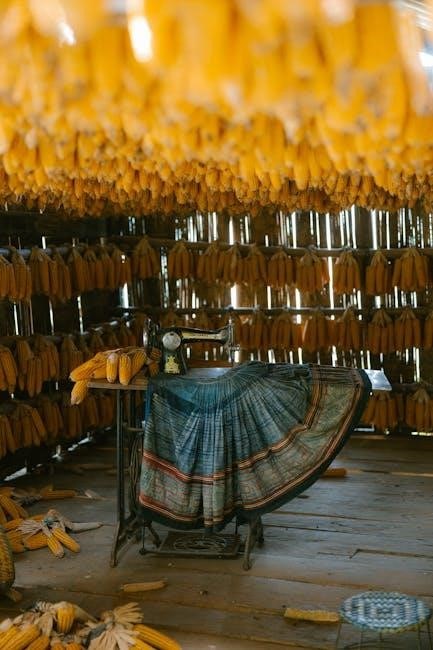
History of Sewing Machine Manuals
Sewing machine manuals originated with early machines‚ providing basic operating instructions. Over time‚ they evolved into comprehensive guides‚ reflecting advancements in technology and design‚ benefiting users and collectors.
2.1. Early Sewing Machine Manuals
Early sewing machine manuals were simple‚ often hand-illustrated guides. They provided basic instructions for threading‚ operating‚ and maintaining the machine. These manuals were crucial for users‚ as they explained how to troubleshoot common issues like thread breakage or mechanical jams. With the rise of companies like Singer‚ manuals became more standardized‚ offering detailed diagrams and step-by-step instructions. They also highlighted the machine’s capabilities‚ such as stitching types and material compatibility‚ making them indispensable for both home users and professionals.
2.2. Evolution of Manuals Over Time
Over time‚ sewing machine manuals evolved from simple‚ text-heavy guides to comprehensive resources with detailed diagrams. Early manuals focused on basic operation‚ while mid-20th-century versions added troubleshooting and maintenance tips. The rise of digital technology allowed manuals to be scanned and shared online‚ preserving rare documents. Today‚ enthusiasts can access vintage manuals through online archives‚ Facebook groups‚ and specialized websites‚ ensuring the knowledge survives for future generations of sewing machine enthusiasts and restorers.
2.3. Role of Singer Sewing Machine Manuals in History
Singer sewing machine manuals played a pivotal role in the history of sewing‚ providing detailed instructions for users. As Singer became a dominant brand‚ their manuals set standards for clarity and comprehensiveness. These guides not only helped users operate machines but also educated them on maintenance and troubleshooting. Singer manuals were often freely available‚ fostering a culture of self-sufficiency among sewists. Their legacy endures‚ with vintage Singer manuals remaining sought after by collectors and restorers‚ preserving the functionality and heritage of these iconic machines for future generations.
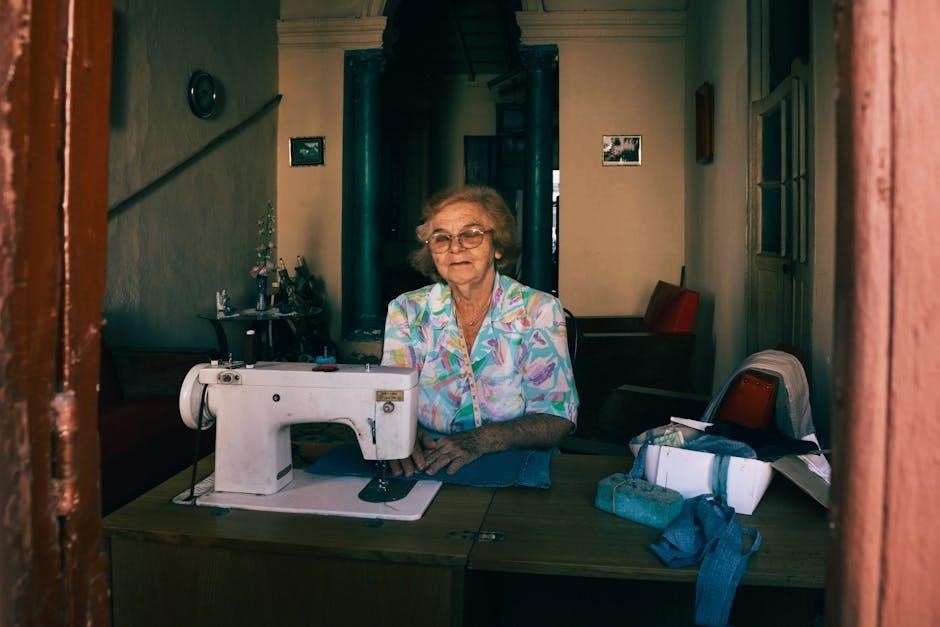
Maintenance and Repair Guides
Maintenance and repair guides are essential for preserving vintage sewing machines. Manuals detail cleaning‚ lubrication‚ and troubleshooting‚ ensuring longevity and optimal performance of these cherished devices.
3.1. Cleaning and Lubricating Vintage Machines
Cleaning and lubricating vintage sewing machines are crucial for their proper functioning. Manuals often specify using sewing machine oil for moving parts and brushes for removing lint. Regular maintenance prevents rust and friction‚ ensuring smooth operation. Pay special attention to areas like the bobbin case and tension discs. Use a soft cloth and avoid harsh chemicals to preserve the machine’s finish. Proper lubrication and cleaning not only extend the machine’s life but also maintain its performance and reliability for years to come.
3.2. Troubleshooting Common Issues
Troubleshooting vintage sewing machines often involves addressing thread tension problems‚ jammed bobbins‚ or faulty stitches. Manuals suggest checking for lint buildup‚ incorrect needle placement‚ or improperly wound bobbins. Lubrication issues can cause mechanical friction‚ while misaligned parts may lead to uneven stitching. Consulting community forums or YouTube tutorials can provide practical solutions. Regular maintenance‚ as outlined in manuals‚ helps prevent these issues. Understanding common problems and their fixes ensures smoother operation and extends the machine’s lifespan‚ keeping it functional for years of reliable use.
3.3. Finding Replacement Parts
Locating replacement parts for vintage sewing machines can be challenging but achievable through specialized resources. The International Sewing Machine Collectors’ Society offers downloadable manuals and part lists. Online marketplaces like eBay and Etsy often carry rare components. Still Stitching provides curated lists of vintage sewing machine parts and accessories. Additionally‚ Facebook groups and forums dedicated to vintage sewing enthusiasts can connect you with sellers or restorers. For obscure parts‚ 3D printing or custom fabrication may be viable options to keep your machine operational and authentic.

Popular Vintage Sewing Machine Models
Popular models include the Singer 31-15‚ Husqvarna Viking Class 71‚ and White Sewing Machine Corp. Sewmaster 470‚ each with dedicated manuals and enthusiast followings.
4.1. Singer 31-15 Manual
The Singer 31-15 manual is a comprehensive guide for this industrial-grade‚ straight-stitch sewing machine. It covers threading‚ maintenance‚ and troubleshooting‚ making it essential for both novice and experienced users. Available as a free PDF download‚ the manual ensures optimal performance for this durable‚ versatile machine. Enthusiasts praise its clear instructions‚ which are indispensable for restoring and operating this iconic model.
4.2. Husqvarna Viking Class 71 Rotary Electric
The Husqvarna Viking Class 71 Rotary Electric manual provides detailed instructions for this advanced vintage sewing machine. Known for its robust construction and versatility‚ the manual covers complex stitching‚ maintenance‚ and troubleshooting. Enthusiasts appreciate its clear guidance‚ which helps in restoring and optimizing the machine’s performance. The manual is a valuable resource for preserving the functionality of this iconic model‚ ensuring it remains a reliable tool for sewing enthusiasts.
4.3. White Sewing Machine Corp. Sewmaster 470
The White Sewing Machine Corp.’s Sewmaster 470 manual is a rare but essential guide for operating and maintaining this vintage model. It details the machine’s mechanical features‚ stitching capabilities‚ and repair techniques. Enthusiasts often seek this manual to restore functionality and unlock the machine’s full potential. Its availability online has been a boon for collectors‚ ensuring the Sewmaster 470 remains a cherished piece in vintage sewing collections.
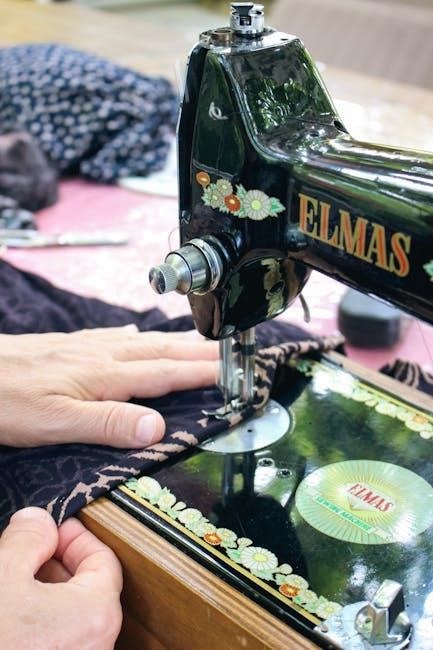
Online Resources for Vintage Sewing Enthusiasts
Online platforms offer a wealth of resources‚ including free manuals‚ tutorials‚ and communities dedicated to vintage sewing machines‚ making restoration and operation more accessible for enthusiasts.
5.1. Free Downloadable Manuals
Free downloadable manuals are a boon for vintage sewing machine enthusiasts. Websites like FREESEWINGMACHINEMANUALS.COM and the International Sewing Machine Collectors’ Society provide access to a vast library of PDF manuals. These resources cover a wide range of models‚ including Singer‚ Husqvarna Viking‚ and White Sewing Machine Corp. Manuals are scanned from original documents and converted to digital formats for easy viewing and printing. They often include detailed instructions for operation‚ maintenance‚ and troubleshooting‚ making them essential for both beginners and experienced collectors. These manuals are freely available‚ ensuring that vintage machines remain functional and cherished.
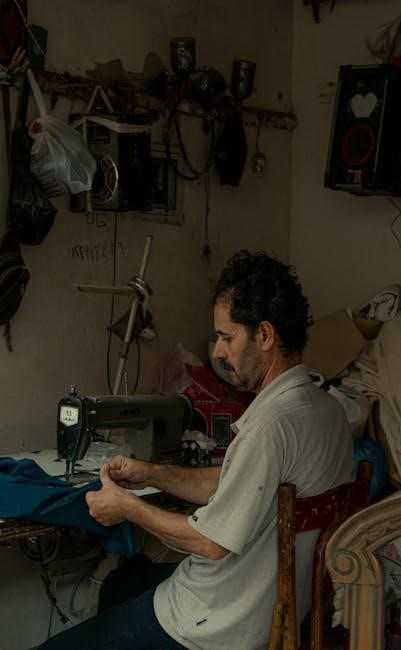
5.2. Facebook Groups and Communities
Facebook groups dedicated to vintage sewing machines have become vibrant hubs for enthusiasts. Communities like Vintage Sewing Machines (Non-Singer) offer a wealth of resources‚ including shared manuals‚ restoration tips‚ and troubleshooting advice. Members actively contribute by uploading rare documents and offering expertise. These groups foster collaboration‚ helping users locate hard-to-find manuals and parts. They also serve as platforms for showcasing restorations and exchanging knowledge‚ creating a supportive environment for both novices and seasoned collectors to preserve and enjoy their vintage machines. Joining these groups is a great way to connect with like-minded individuals globally.
5.3. YouTube Channels for Vintage Sewing Machines
YouTube channels dedicated to vintage sewing machines have become essential resources for enthusiasts. Channels feature detailed restoration tutorials‚ maintenance tips‚ and demonstrations of classic machines in action. Videos often showcase rare models‚ such as the Singer 31-15 or Husqvarna Viking Class 71‚ highlighting their stitch capabilities and historical significance. Some creators focus on troubleshooting common issues‚ while others share creative projects made using vintage machines. These channels not only preserve the legacy of antique sewing machines but also inspire a new generation of sewists and collectors to embrace traditional craftsmanship.
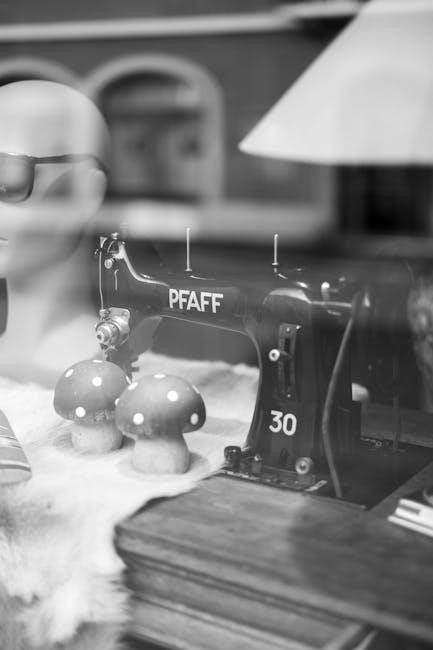
Restoring Vintage Sewing Machines
Restoring vintage sewing machines involves meticulous cleaning‚ refinishing‚ and replacing worn parts to revive their functionality and aesthetic charm‚ preserving their historical craftsmanship and sentimental value.
6.1. Step-by-Step Restoration Process
The restoration of vintage sewing machines begins with a thorough inspection and cleaning to remove dirt and oil residue. Disassembling the machine allows for part examination and replacement of worn components. Lubrication and adjustments are crucial to ensure smooth operation. Refinishing the exterior restores its original appearance. Reassembling the machine with care ensures proper alignment and functionality. Finally‚ testing the machine guarantees it is ready for use‚ preserving its heritage for future generations with meticulous attention to detail.
6.2. Tips for Beginners
Beginners should start by joining online communities like Facebook groups or forums for vintage sewing enthusiasts. These platforms offer valuable support and access to free manuals. Always clean and lubricate the machine before use to ensure smooth operation. Start with simple projects to gain confidence and familiarize yourself with the machine’s mechanics. Consulting original manuals is essential for understanding specific models‚ like the Singer 31-15 or Husqvarna Viking Class 71. Patience and practice are key to mastering these timeless machines effectively.
6.3. Where to Find Restoration Specialists
Restoration specialists for vintage sewing machines can be found through online forums‚ Facebook groups‚ and local sewing communities. The International Sewing Machine Collectors’ Society often lists trusted experts. Additionally‚ some repair shops specialize in vintage models‚ offering services for cleaning‚ lubricating‚ and restoring machines to their original condition. Enthusiasts recommend reaching out to experienced restorers through platforms like Etsy or specialized sewing machine forums for reliable assistance.

Stitch Capabilities and Performance
Vintage sewing machines offer diverse stitch options and robust performance‚ capable of sewing various materials like denim and leather with precision‚ often rivaling modern machines.
7.1. Types of Stitches Vintage Machines Can Sew
Vintage sewing machines are capable of producing a variety of stitches‚ including straight‚ reverse‚ and decorative stitches. Many models‚ like the Husqvarna Viking Class 71 and Singer 31-15‚ can handle intricate patterns and heavy materials such as denim and leather. These machines often feature adjustable tension and stitch length‚ allowing for customization. Their stitch capabilities‚ combined with durability‚ make them versatile tools for both practical and creative sewing projects. Manuals provide detailed guidance on utilizing these stitch options effectively.
7.2. Sewing Different Materials
Vintage sewing machines are remarkably versatile‚ capable of sewing a wide range of materials‚ from delicate fabrics like silk to heavy-duty options such as denim and leather. Manuals often provide specific guidance for adjusting tension‚ stitch length‚ and needle size to accommodate different fabrics. For instance‚ the Singer 31-15 and Husqvarna Viking Class 71 are known for their ability to handle thick materials effortlessly. Proper setup‚ as outlined in manuals‚ ensures optimal performance and prevents damage to both the machine and fabric.
7.3. Comparing Vintage and Modern Machines
While modern sewing machines boast advanced features and automation‚ vintage models offer durability and simplicity. Manuals highlight the timeless appeal of classic machines‚ which often outperform newer models in terms of stitch quality and reliability. Vintage machines‚ like the Singer 31-15‚ excel in sewing heavy fabrics‚ whereas modern machines may offer more convenience with programmable stitches. The choice between vintage and modern ultimately depends on the sewer’s needs‚ with vintage manuals providing a bridge to traditional sewing techniques and machine maintenance.

Collectibility of Vintage Sewing Machines
Vintage sewing machines are highly sought after for their craftsmanship‚ historical significance‚ and nostalgic appeal. Rare models‚ like the Singer 31-15‚ are prized by collectors worldwide for their durability and unique designs.
8.1. Rare and Valuable Models
Rare and valuable vintage sewing machine models‚ such as the Singer 31-15 and Husqvarna Viking Class 71‚ are highly sought after by collectors. These machines are prized for their historical significance‚ intricate craftsmanship‚ and functionality. The Singer 31-15‚ known for its durability and ability to sew heavy materials like leather‚ is particularly valuable. Similarly‚ the Husqvarna Viking Class 71 is admired for its rotary electric design and versatility. These models often fetch high prices at auctions and among enthusiasts‚ making them true treasures for collectors.
8.2. Factors Affecting Value
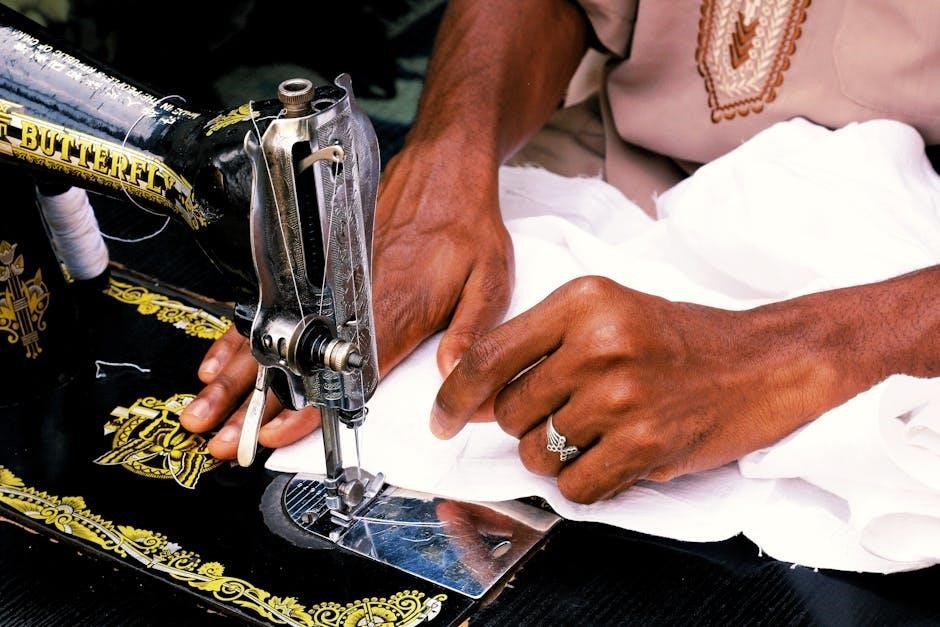
The value of vintage sewing machines is influenced by factors like rarity‚ condition‚ and historical significance. Machines with unique features or limited production runs‚ such as the Singer 31-15‚ often command higher prices. Additionally‚ the presence of original accessories and manuals‚ as well as the machine’s operational state‚ play a crucial role. Restoration quality and provenance can also enhance value‚ making certain models highly desirable among collectors and enthusiasts.
8.3. Market Trends for Vintage Sewing Machines
The market for vintage sewing machines is thriving‚ driven by nostalgia and a growing interest in sustainable crafting. Collectors and enthusiasts actively seek rare models like the Singer 31-15 and Husqvarna Viking Class 71. Online communities and forums facilitate buying‚ selling‚ and trading‚ while free downloadable manuals and restoration guides fuel DIY projects. The rise of social media and specialized groups has increased visibility‚ making vintage machines more accessible and desirable. This trend reflects a broader appreciation for craftsmanship and the unique charm of older machinery.
Vintage sewing machine manuals remain essential for enthusiasts‚ offering detailed guidance for maintenance‚ restoration‚ and operation‚ while fostering a community dedicated to preserving these timeless tools.
9.1. Final Thoughts on Vintage Sewing Machine Manuals
Vintage sewing machine manuals are timeless resources that empower enthusiasts to maintain‚ restore‚ and operate classic machines effectively. They preserve the history and functionality of these devices‚ ensuring they remain functional and cherished. Manuals provide step-by-step guidance‚ troubleshooting tips‚ and maintenance advice‚ making them indispensable for both seasoned collectors and newcomers. By accessing these manuals‚ individuals can unlock the full potential of their vintage machines‚ fostering a deeper appreciation for craftsmanship and sustainability in sewing.
9.2. Encouragement to Explore and Preserve
Exploring and preserving vintage sewing machine manuals is a rewarding journey that connects us to the past while empowering modern creativity; With a wealth of resources available online‚ enthusiasts can easily access guides‚ manuals‚ and tutorials to maintain and restore their machines. These materials not only ensure the longevity of vintage sewing machines but also foster a sense of community among collectors. By preserving these manuals‚ we honor the craftsmanship of earlier eras and contribute to a sustainable future for sewing enthusiasts worldwide.
Leave a Reply
You must be logged in to post a comment.